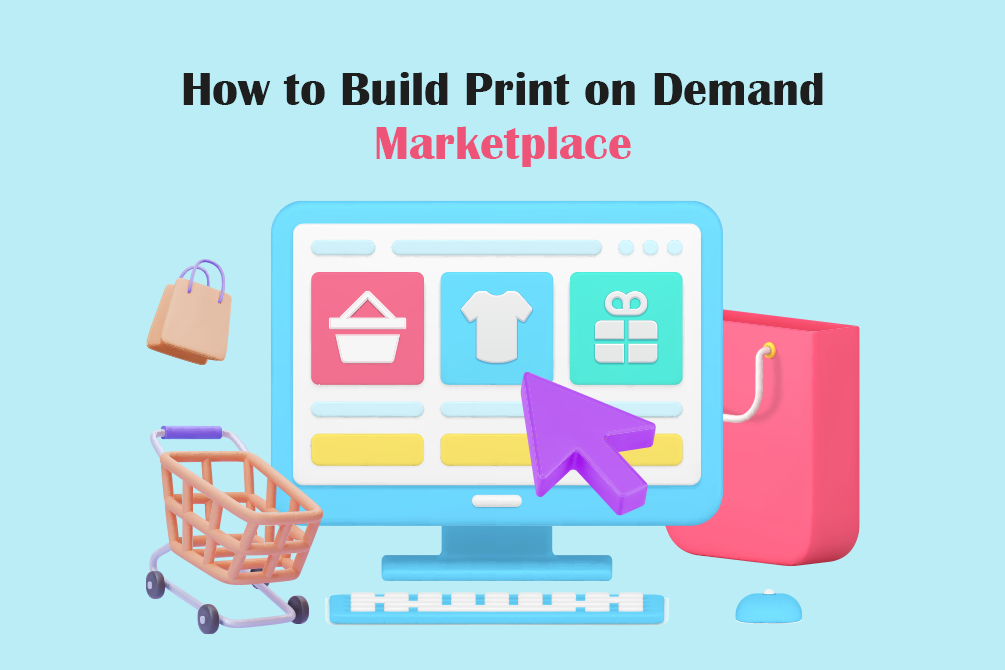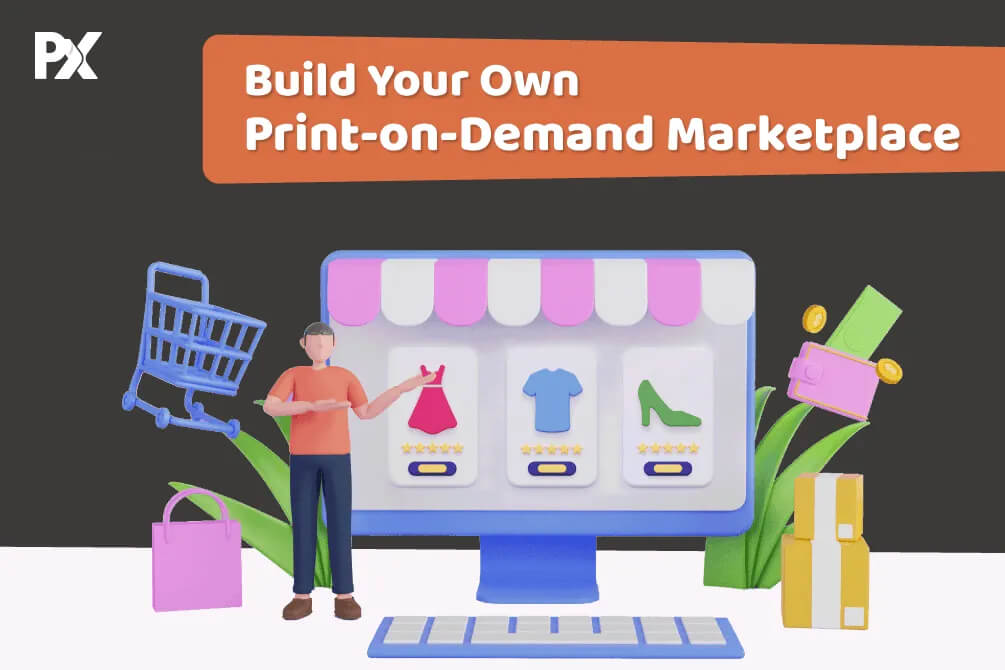Pricing your print-on-demand product is one of the cornerstone decision for Print businesses. It impacts almost all the aspects of your business. Pricing is the deciding factor for everything from your monetary in-flow, performance amongst the competitors, profit margins, to what expenses you can afford to cover.
As important as it sounds, it also can seem intimidating. This is why most entrepreneurs find themselves stuck in the dilemma of pricing while launching a new store or product. Many times, their launch dates get delayed due to this dilemma. Therefore, it is important not to let it stop you from launching. Undoubtedly, you can get the best pricing data from launching and testing with real customers. But you still need to start with the prices that would work while launching your store. It is always better to scout the internet for information and look to find the right way to come up with a price for your products rather than just guessing.
In this blog post, we’re going to cover the strategies, dos and don’ts, and know-hows of on-demand print products. This guide will ultimately answer your question related to “How to price on demand print products, and at the end of this post, you’ll be able to pick out the best strategy and set a final price for your products. Let us start!
Step One: Assess Your Product Cost
The most crucial purpose of your product prices is that it needs to strengthen and sustain your business. The most important criteria are that your prices must meet the customer’s expectations. Hence you need a sustainable base price that also benefits you economically. If your prices are calculated in a way that causes you loss, it will be impossible for you to grow.
This is the primary reason why assessing your business is a must. You need to consider evaluating all aspects of your business. Print-on-demand business entrepreneurs need to consider all the print-on-demand costs, everything from the designing cost to the taxes. There are also other expenses involved. Let us have a look at them one by one:
1. Cost of Designing
You can calculate the designing costs based on three aspects:
- Design Cost Per ProductCharging for designs per product is one way to calculate design costs. You can do this by dividing the price you pay to the designer by the number of product items you expect to sell. It is especially crucial if you plan on releasing the design in a limited volume and time.
Most Suitable for: Outsourcing design services.
How to Calculate: Design Price /Number of Designs you Plan to Sell = Design Cost per Product
- Based on Minimum OrdersLet’s say you decided on a price for a product. Next, find out the minimum number that you need to sell to adjust your profit margin. Keep adjusting the number accordingly.
Most Suitable for: Seasonal Retail Products
How to Calculate: Design Price/ Profit Margin = Minimum Orders to Sell
- Based on Hourly RateAlthough there are many Print Designing tools that let you create designs for free, it is not wise not to calculate the charge of your laborious skill. Come up with an hourly cost affordable to you and add them to your products!
Most Suitable For: Businesses that create their own designs.
How to Calculate: Your Hourly Rate X Hours spent on design = Design Price
Sell more with customizable products. Make online shopping experience engaging with product customization as an added USP!
2. Production Cost
Production is another important part of your Print on demand costs. Once you have the designs, the next process would be producing the orders. Production cost has two aspects:
- Printing CostsYou need to add the cost incurred during printing. If you’re offering a special kind of printing, then you need to charge extra for that. The basic printing charges involve the charges of the supplies, infrastructure, materials, and so on. You can set a fixed price per product for the raw materials and supply.
- Software CostsYou are bound to use an online platform to sell online. You need to keep in mind all these costs, from ecommerce platforms to payment processors. Some platforms like Shopify have a fixed cost, whereas some cost you a certain percentage of your sales. So, payment processors like PayPal charge a transaction fee. Make yourself informed about these policies and charges.
3. Shipping and Warehousing
Charging for storage is one of the things you should do mindfully. Maybe right now, your garage space is sufficient. But what if your customer demand grows? If the demand increases suddenly, it might become impossible for you to deliver timely and increase the supply all of a sudden. Hence, keep an eye on your product demand and warehousing prices. Both should be proportional and in-sync. This might eventually be necessary.
Next comes the shipping cost, which follows the fundamental concept of price per shipment. A great way to win customers is to provide them shipping of various items at the same cost. You can also divide the supply shipping cost by the number of items in your order and calculate the shipping cost per product.
4. Taxes
Taxes depend on where your end-customer lives. Various regions have different taxes such as sales tax in the US, VAT in the European countries, GST in India and Australia, etc. You may be liable to collect tax from your customers, and hence, these expenses must go into your product prices.
So, now you’ve accessed your print-on-demand costs and know how much capital you need to create a product. Now let us have a look at various product pricing strategies.
Step Two: Choose a Product Pricing Strategy
Once you know your print on demand costs, it is time to come up with a game plan. Here are some of the most effective product pricing strategies:
1. Competition Oriented Pricing
Start by comparing your products with similar items in the market and getting an overall idea of the potential price range. There are three main tactics that you can choose from:
- Pricing Above the Market AverageOvertake your competition by adding more value to the shopping experience. Add free gifts, personalized messages, and so on.
- Pricing the Same as the MarketPricing as same as the market is a safe bet to play. If you want to cover a large set of target audiences and still make a profit, this is an ideal solution.
- Pricing Below the Market AverageOffer the same quality goods and services at a lower price. This way, you can steal some customers and get ahead in the competition. But do it mindfully as if you severely under-price a product, it may seem sketchy and can generate insufficient profit.
2. Discount Pricing/ Anchor Pricing

Anchor pricing generally refers to setting up an imaginary anchor price only to declare a lower discount price immediately. The discount seems more appealing to customers, and they’re more likely to buy your products. Hence the businesses are more likely to boost sales.
This Apple iPad Pricing Video is a wonderful example of anchored pricing. In the video, Steve Jobs announces the iPad pricing process. He mentions that this product must cost $999 and talks about the qualities of the product. The consumer mind is set at the $999 price. Soon after this, he announces the price will actually be $499, shattering the original price.
Discount pricing is similar to anchor pricing, except that it actually has a starting price. Here, you set up a starting price higher than the actual market price and then make a sale offer on it. This draws in the bargain shoppers.
3. Dynamic Pricing Based on Demand
To implement dynamic pricing, you constantly need to be in touch with the recent market trends. The product prices strictly depend on the demand. This means that you will need to change prices frequently based on the season. Many airline companies have this kind of pricing structure. Amazon marketplace also uses this strategy.
Launch Web to Print Store now! Start selling personalized products with a brand new website.
4. Skimming Price
The skimming pricing strategy is an effective one. You usually enter a marketplace with a higher price and slowly lower your prices over time. This way, brands can make the most out of the market by gaining profits way before the product starts losing its demand. This strategy is popular in the electronics industry. As the product model becomes old and the new model releases, the old one’s prices need to be decreased.
Step Three: Profit Margin
So, now you have all the information and everything in place. The last thing to add will be adding your profit margin. You can adjust your profit to match your competitors and try out different pricing strategies.
How to Calculate Retail Price: Product Cost + Profit Margin = RETAIL PRICE
Ensure that your price still falls within the range of the overall acceptable price for that particular product. It can get challenging for you if your prices are twice as higher as your competitors. Also, make sure that you do not put the profit margin too low so that the overall price goes lower. Your profit margin should cover the extended hours of labor and other costs.
Get Started with Your Product Pricing
Now that you know all the print on demand costs and strategies, you can figure out how to price your products for retail. Get to work now! For more information, you can visit our Knowledge Hub. For any queries related to printing prices, strategies, models and so on you can contact our experts. We can help you frame the perfect pricing strategy as per your business needs.
All product and company names are trademarks™, registered® or copyright© trademarks of their respective holders. Use of them does not imply any affiliation with or endorsement by them.




